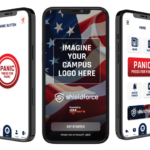In 2009, nearly 15,000 men and women were admitted to U.S. hospital emergency departments after being intentionally drugged by someone else, according to a new report. Females accounted for nearly two-thirds of these intentional poisoning visits, and alcohol/drug combinations were involved in 46 percent of the ER admissions linked to intentional poisonings.
Intentional poisoning refers to attempts to physically harm someone or render that person defenseless against crimes by deliberately getting them to ingest, inhale or in some other way take in a potentially harmful substance without their knowledge. A first-of-a-kind national report reveals that more than 14,720 emergency department visits were caused by drug-related intentional poisonings during 2009 (the latest year with available data). The report by the Substance Abuse and Mental Health Services Administration (SAMHSA) shows that the majority of those visits (63 percent) were by females, and that 73 percent of the visits were by people aged 21 or older.
Related Article: Alcohol Abuse Prevention Basics
The report showed that a wide variety of substances were involved in these intentional poisonings, including alcohol, illicit drugs and pharmaceuticals, as well as substances for which patients lacked knowledge about the specific drug(s). Alcohol was a factor in 60 percent of these intentional poisoning-related emergency department visits. Illicit drugs such as marijuana, stimulants, cocaine and Ecstasy were involved 30 percent of the time. Pharmaceuticals such as drugs for insomnia, anxiety, benzodiazepines and pain relievers appear to have been involved in 21 percent of these intentional poisoning cases.
Alcohol and drug combinations were involved in almost half (46 percent) of the emergency department visit cases linked to intentional poisonings.
“The danger of being tricked into ingesting an unknown substance is all too real at bars, raves, parties or concerts where alcohol and other substances are shared in a social manner,” said SAMHSA Administrator Pamela S. Hyde. “Not only is the health of the person who is poisoned compromised, they are in jeopardy of falling prey to other crimes such as robbery and sexual assault. Clearly some common sense precautions like being aware can go a long way in protecting oneself from people with malicious intent.”
The report, Drug-Related Emergency Department Visits Attributed to Intentional Poisoning, is available at http://oas.samhsa.gov/2k11/DAWN040/WEB_DAWN_040.htm.
People who suspect they may be the victims of an intentional poisoning can call the national Poison Help toll-free number, 1-800-222-1222, to reach their closest poison control center where trained health care providers provide multilingual help 24 hours a day, seven days a week. The Poison Help number is funded by the Health Services and Resources Administration.
Related Articles:













